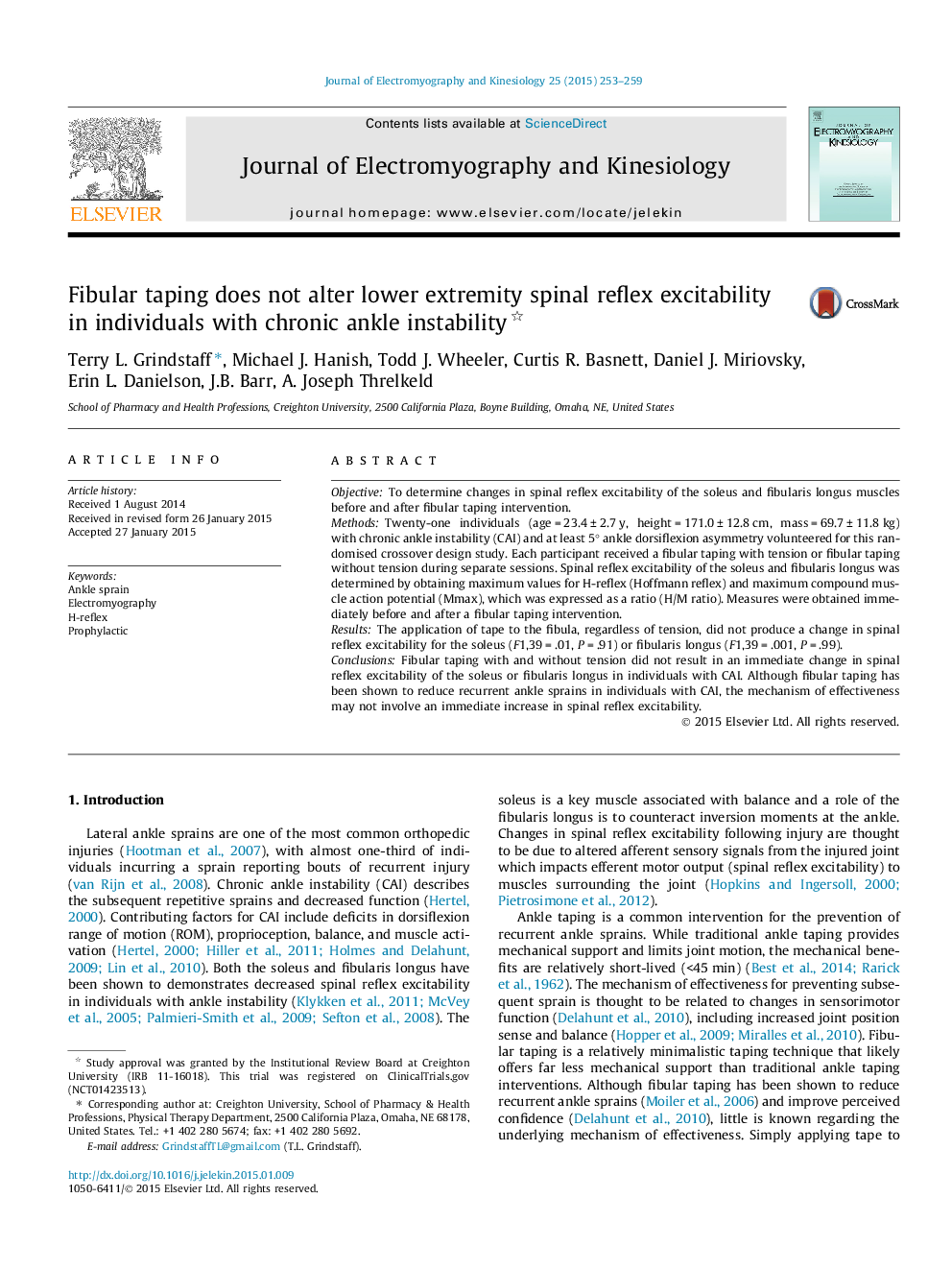| کد مقاله | کد نشریه | سال انتشار | مقاله انگلیسی | نسخه تمام متن |
|---|---|---|---|---|
| 4064683 | 1266222 | 2015 | 7 صفحه PDF | دانلود رایگان |
ObjectiveTo determine changes in spinal reflex excitability of the soleus and fibularis longus muscles before and after fibular taping intervention.MethodsTwenty-one individuals (age = 23.4 ± 2.7 y, height = 171.0 ± 12.8 cm, mass = 69.7 ± 11.8 kg) with chronic ankle instability (CAI) and at least 5° ankle dorsiflexion asymmetry volunteered for this randomised crossover design study. Each participant received a fibular taping with tension or fibular taping without tension during separate sessions. Spinal reflex excitability of the soleus and fibularis longus was determined by obtaining maximum values for H-reflex (Hoffmann reflex) and maximum compound muscle action potential (Mmax), which was expressed as a ratio (H/M ratio). Measures were obtained immediately before and after a fibular taping intervention.ResultsThe application of tape to the fibula, regardless of tension, did not produce a change in spinal reflex excitability for the soleus (F1,39 = .01, P = .91) or fibularis longus (F1,39 = .001, P = .99).ConclusionsFibular taping with and without tension did not result in an immediate change in spinal reflex excitability of the soleus or fibularis longus in individuals with CAI. Although fibular taping has been shown to reduce recurrent ankle sprains in individuals with CAI, the mechanism of effectiveness may not involve an immediate increase in spinal reflex excitability.
Journal: Journal of Electromyography and Kinesiology - Volume 25, Issue 2, April 2015, Pages 253–259
